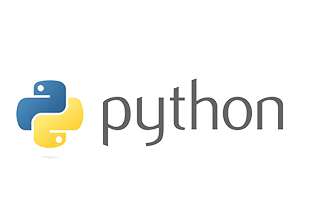Android Course
- The Genesis of Java
- OOPs Concepts,
- Overview of Java,
- Data Types variables & arrays,
- Operators, Classes & Methods,
- Interfaces & Abstract classes,
- Overloading & Overriding,
- Packages & Privileges,
- Collection APIs,
- Exception Handling Multithreaded programming,
- I/O Applets & Other topics.
- String Handling,
- Java.util package complete coverage,
- More I/O, Networking,
- Android Application Development
- An Open Platform for Mobile Development
- Android SDK Features
- Introduction of Development Framework
- Android Application Architecture
- Android Libraries
- Advanced Android Libraries
- What You Need to Begin
- Downloading and Installing the Android SDK & IDE
- Creating Your First Android Activity
- Types of Android Applications
- Developing for Mobile Devices
- Hardware-Imposed Design Considerations
- Considering the Users’ Environment
- Android Development Tools
- The Android Emulator
- The Android Debug Bridge (ADB)
- Module 4: Creating Applications and Activities
- What Makes an Android Application?
- Introducing the Application Manifest
- Using the Manifest Editor
- The Android Application Life Cycle
- Understanding Application Priority and Process States
- Externalizing Resources
- Creating Resources
- Using Resources
- Creating an Activity
- The Activity Life Cycle
- Android Activity Classes
- Fundamental Android UI Design
- Introducing Views
- Creating Activity User Interfaces with Views
- The Android Widget Toolbox
- Introducing Layouts
- Using Layouts
- Creating New Views
- Modifying Existing Views
- Creating Compound Controls
- Creating Custom Widgets and Controls
- Using Custom Controls
- Creating and Using Menu s
- Introducing the Android Menu System
- Defining an Activity Menu
- Dynamically Updating Menu Items
- Handling Menu Selections
- Submenus and Context Menus
- Introduction of Intents
- Using Intents to Launch Activities
- Using Intent Filters to Service Implicit Intents
- Using Intent Filters for Plug-ins and Extensibility
- Using Intents to Broadcast Events
- Introducing Adapters
- Introducing Some Android-Supplied Adapters
- Using Adapters for Data Binding
- Using Internet Resources
- Connecting to an Internet Resource
- Leveraging Internet Resources
- Introducing Dialogs
- Introducing the Dialog Class
- Using Activities as Dialogs
- Creating a n Earthquake Viewer
- Saving and Loading Files
- Including Static Files as Resources
- File Management Tools
- Databases in Android
- Introducing SQLite
- Cursors and Content Values
- Working with Android Databases
- Using Content Providers
- Native Android Content Providers
- Creating a New Content Provider
- Creating and Using an Earthquake Content Provider
- Using Location-Based Services
- Setting up the Emulator with Test Providers
- Updating Locations in Emulator Location Providers
- Create an Application to Manage Test Location Providers
- Selecting a Location Provider
- Finding the Available Providers
- Finding Providers Based on Requirement Criteria
- Finding Your Location
- “Where Am I?” Example
- Tracking Movement
- Updating Your Location in “Where Am I?
- Using Proximity Alerts
- Using the Geocoder
- Reverse Geocoding
- Forward Geocoding
- Creating Map -Based Activities
- Creating a Map-Based Activity
- Configuring and Using Map Views
- Using the Map Controller
- Creating and Controlling Services
- Binding Activities to Services
- Using Background Worker Threads
- Creating New Threads
- Synchronizing Threads for GUI Operations
- Moving the Earthquake Service to a Background Thread
- Let’s Make a Toast
- Customizing Toasts
- Using Toasts in Worker Threads
- Using Alarms
- Using Alarms to Update Earthquakes
- Introducing Android Instant Messaging
- Using the GTalk Service
- Binding to the GTalk Service
- Making a GTalk Connection and Starting an IM Session
- Introducing Presence and the Contact Roster
- Managing Chat Sessions
- Using the Media APIs
- Playing Media Resources
- Recording Multimedia
- Using the Camera
- Controlling Camera Settings
- Using the Camera Preview
- Taking a Picture
- Using the Camera Preview
- Introducing the Sensor Manager
- Using the Accelerometer and Compass
- Detecting Acceleration Changes
- Creating a Speedometer
- Determining Your Orientation
- Creating a Compass and Artificial Horizon
- Android Telephony
- Making Phone Calls
- Monitoring Phone State and Phone Activity
- Monitoring Data Connectivity and Activity
- Accessing Phone Properties and Status
- Controlling the Phone
- Using Bluetooth
- Introducing the Bluetooth Service
- Controlling the Local Bluetooth Device
- Discovering and Bonding with Bluetooth Devices
- Managing Bluetooth Connections
- Communication with Bluetooth
- Using a Bluetooth Headset
- Managing Network and Wi-Fi Connections
- Controlling Device Vibration
- Using AID L to Support IP C for Services
- Implementing an AIDL Interface
- Using Internet Services
- Building Rich User Interfaces
- Working with Animations
- Using Themes to Skin Your Applications
- Advanced Canvas Drawing
- Introducing Surface View
- Creating Interactive Controls
More Courses

ASP.NET Course
Getting Started
Windows Operating Systems
Microsoft.Net & Versions
Language Support
Types of Applications
Installations & Getting Started
Creating Applications
Testing & Debugging Applications

Digital Marketing Course
What is digital marketing?
How is it different from traditional marketing?
ROI between Digital and traditional marketing?
Discussion on Ecommerce

Java Course
Introduction
Features
Pros and Cons
Environment Setup
First ProgramVariables
Data Types
Variable scope
Typecasting Operators
Expressions
Operator precedence

Core Python Course
History
Features
Setting up path
Working with Python
Basic Syntax
Variable and Data Types
OperatorIf
If- else
Nested if-else
